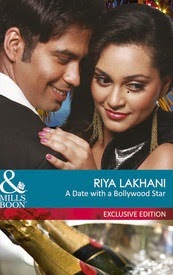This small book running into 142 pages is
based on the premise that “Everything that happens to me happens so that I can
be benefited to the maximum amount possible.”
I kept on reminding myself the aforesaid
lines all the time while I was reading the book. I had picked the book in a
hope to divulge into the Zen philosophy. Zen and the Art of Happiness has a Zen
in its name and has sprinkled quotes by Buddha and Tao here and there. But it
not a book on Zen philosophy. It is a typical American self-help book. Yes, the
same kind of stuff which assures to make you smart in 7 days and increase your
memory in 30 days. It quotes Vivekananda more than once. Vivekananda’s contribution
is towards Vedanta philosophy. Though Zen too has its roots in India, there is
a stark difference between Zen and Vedanta. The book also quotes a Tamil poem.
So the book tells again that you are what
you think. The philosophy that all that happens is for the best, may be new to
the Western people, but we Easterners have been hearing it since our childhood.
It also tells that everything comes at the appointed time. Again, this is an
integral part of our mental makeup. Even our Bollywood movies have dialogues
to that effect. Any Tom, Dick and Harry will mouth dialougues like, “Jo hota
hai ache ke liye hota hai” and “Waqt se pehle aur kismet se jyada na kisiko
mila hai na milega.”
Still the book has some silver linings. It
tells today’s materialistic youth that happiness cannot be linked to
possessions. Yes, our youngsters may not appreciate this pearl of wisdom when
it comes from our own grandparents. But when an American author who has written
a dozen books on Chinese philosophy and personal growth says so, it has every
likelihood of being taken seriously.
Like any
other self-help book, this book too speaks about forgiveness, positive thinking
and using the tool of imagination. Like any junk book on spirituality it speaks
about choosing your response, stress reduction, change management, forgiveness
and of course living in the moment.
Once you accept that the book doesn’t
offer anything about Zen, you will definitely appreciate the author for his
writing style. He writes in a simple manner and quotes everyday situations
which are easy to relate. Having overcome the disappointment of not getting to
read much about Zen, once you start reading it, you will not keep it down until
you have finished reading it. The book is a good primer for our adolescents to
equip them to venture out in the real world. Lines like “The Universe always
strikes at your weakest point, because that’s what most needs strengthening,”
“The angry man will defeat himself in battle as well as in life” and “Happiness
is being happy with what you have,” definitely have the potential of bringing
out a change of heart, even if it is only for a few minutes.







